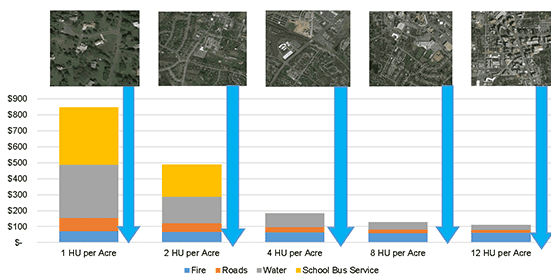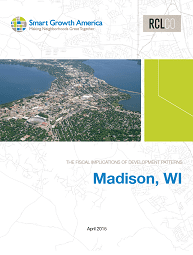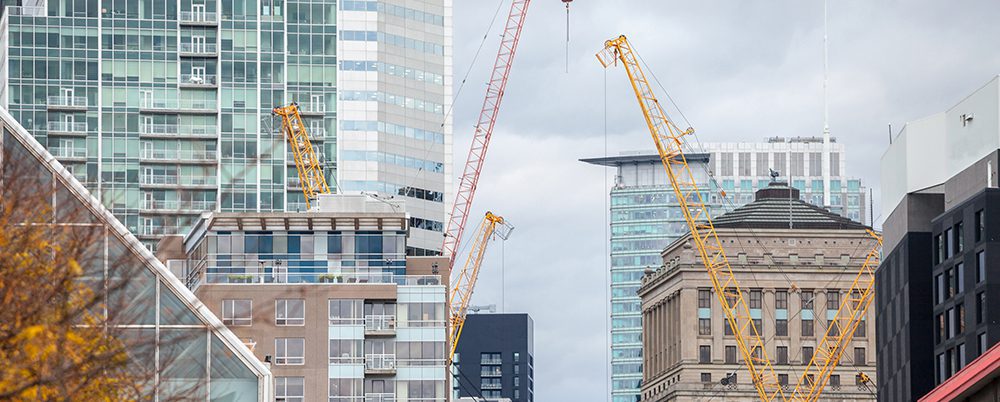Public Projects, Private Dollars – How the Real Estate Industry will Keep Public Investments Alive

While many economists are becoming cautiously optimistic about the prospects for economic growth through 2012, the after effects of the recent recession will likely be felt in the public sphere for years to come. Not only individuals, but also governments, have been slashing budgets. Federal, state, and local governments have all experienced some level of personnel reductions, hiring freezes, and wage caps. Critically, public works projects—including roads, bridges, schools, and water/wastewater treatment—are being or have been cancelled. Economic hard times combined with fractious political climates have created a new reality in which funding for these projects is not only difficult to establish, but the traditional means by which these projects have been financed—taxes and debt—are wildly unpopular and unlikely to be enacted.
All this while the American Society of Civil Engineers suggests that the nation has a $1.7B deficit in infrastructure spending to-date. Nearly 30% of the nation’s dams are classified as hazardous, there is a $461B backlog in road/highway maintenance, and 26% of bridges are structurally deficient or obsolete. And traditional sources of funding for these uses are increasingly under scrutiny, if not outright attack. While annual appropriations (read: earmarks) are the subject of much public debate, formula funding which has not been historically subject to political debates is now a hot topic on Capitol Hill. Few believe that highway and transportation dollars will disappear from federal budgets, but the fact that their existence has come under any kind of threat should give anyone interested in the feasibility of much-needed public works projects cause for concern.
With the above as a somewhat terrifying backdrop, there is no need to imagine what America in 2020 would look like if we are truly unable to fix our roads, build new schools, upgrade our water and wastewater infrastructure, or improve our hospitals. This is because public projects are receiving a boost of support from an unexpected source—the Real Estate Industry. After almost three decades of advances in public-private partnerships, the 2010s are witnessing an era of increasingly sophisticated private-public partnerships which are helping to keep afloat ambitious but necessary plans for roads, bridges, schools, and hospitals. What is the motivation for private developers to get involved in public projects? Simply put, the public sector is now embracing a revised playbook when it comes to public facilities. Public entities across the nation are becoming more accepting of—and facile with—sale leasebacks, ground leases, joint ventures, limited participation ventures, and equity participation. And private developers are responding in kind, by providing efficient and responsive means of delivering public projects that have creditworthy anchor tenants or equity partners (governments).
Keep an eye out for an increasing number of privately sponsored public projects in at least the following three key areas:
1. Highways, Bridges, and Roads
California launched a series of privately built toll lanes in 1995, and about a dozen states have followed suit with enabling legislation since then. Virginia continues to tweak its laws to streamline the procurement process, but is now full steam ahead with a massive reconstruction of the state’s portion of the Capital Beltway. Congestion pricing will be used to charge drivers a premium for usage of HOT lanes. If all goes as planned, Virginia’s statute allowing private companies to build state facilities will result in two new lanes in each direction, 45 miles of communication cables, and dozens of high-tech electronic sensors, all coming on the heels of a budget crisis in which the state had to plug a $4.2B shortfall. How did they get this done? With the help of a private road building company from Australia and itsconstruction partner. These private companies fronted $1.5B in private equity and private bond proceeds and married that with a $409M grant from the Commonwealth Transportation Fund. The proposal should not cost taxpayers anything unless there are out-of-scope items specifically requested, and Transurban and Fluor are on the hook for all debt financing. By assuming significant financial risk, Transurban and Fluor Construction are also incentivized to keep the project moving quickly—certainly those that have witnessed the construction have noticed its breakneck speed—as well as to meet or exceed their internal goal of a 13% return on the equity.
2. Prisons
Private prisons have become a necessity nationwide primarily because states have lacked the capital construction dollars needed to build prisons of its own. In places like Colorado, private companies have delivered prisons at critical times when the facilities were needed, and while politics of private prisons continues to be debated in the public sphere, they are likely here to stay. National firms like the GEO Group have found ways to make handsome profits while states look at them to privatize the very expensive work of correctional facility construction and management. Quarterly earnings at the publicly traded company based in Boca Raton have tracked in the low $400M range. Clearly, there is profit in the prison business, and at a time when state resources to deliver these expensive institutions is not available, the private sector has stepped in to fill the void. The debate about the long-term desirability of private prisons will likely continue, but the fact that private companies have been willing and able to deliver these expensive products to states which they simply didn’t have the money to build themselves certainly serves a tremendous purpose.
3. Schools
Virginia, Texas, and now North Carolina are among a handful of states that have enacted enabling legislation that allows for the creation of public-private partnerships to deliver schools and school facilities. Virginia’s Public-Private Education Facilities and Infrastructure Act of 2002 (“PPEA”) grants responsible public entities the authority to create public-private partnerships for the development of a wide range of projects for public use if the public entities determine there is a need for the project and that private involvement may provide the project to the public in a timely or cost-effective fashion.
Development companies have formed to provide services under the Act, promising condensed construction schedules, 10% cost savings on average, and reduced needs for tax increases in order to fund the projects.
Depending on the state, in some projects the partnership continues to own the asset and lease it to the school district, either with or without a medium-term reversion clause. In other instances, the facility is delivered under a fee development scenario. The model shifts much of the design-build risk from the public sector to the private sector. Competition for the contracts results in competitive pricing and attractive terms for public institutions, which in many cases also get relief from the debt burden from the ventures.
There is no one playbook for these partnerships. Numerous models are being tested today, as are additional innovative approaches to engaging private developers to deliver these facilities.
Related Articles
Speak to One of Our Real Estate Advisors Today
We take a strategic, data-driven approach to solving your real estate problems.
Contact Us







